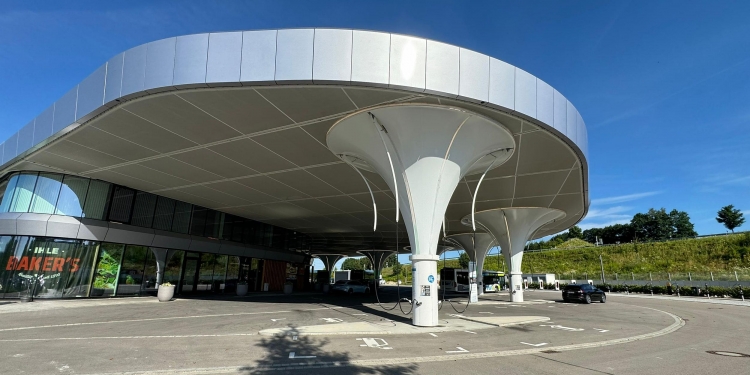As more electric vehicles (EV) hit the road, there’s a growing need for a redundant and reliable charging network along highways. While Malaysia’s EV charging infrastructure is growing at a rapid pace, there’s still a lot that needs to be done if the country aims to have EVs represent 15% of total new vehicles registered by 2030.
We recently visited Germany and we checked out what we think is the most epic DC charging hub yet. This fine example should serve as a template for high-powered EV Charging hubs along interstate highways in Malaysia.
Sortimo Innovations Park in Zusmarshausen
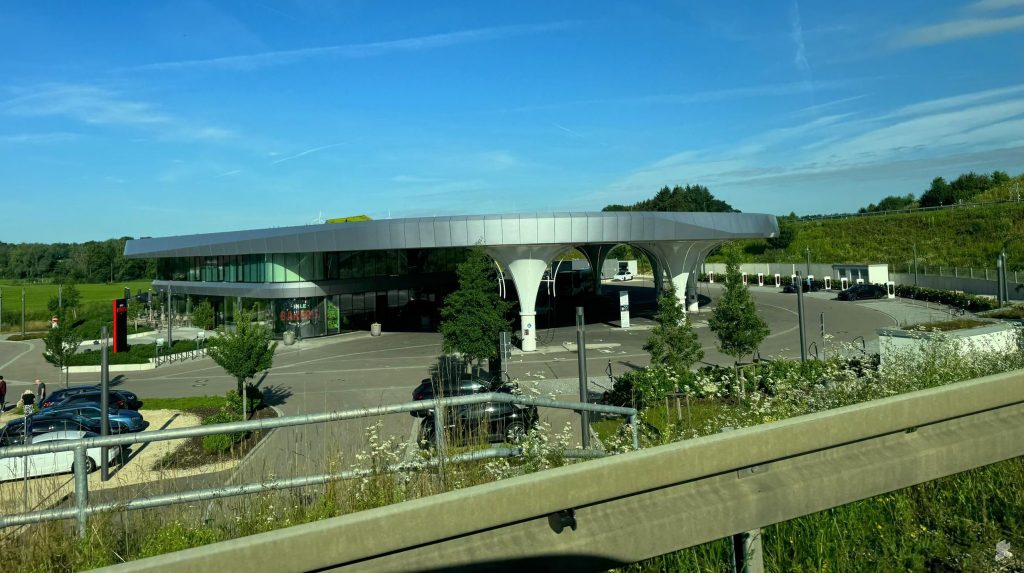
Located at Sortimo Innovations Park in Zusmarshausen, Germany, this EV charging location is a very convenient charging stop along the Autobahn if you’re driving between Munich and Stuttgart. At the moment, there are over 70 charge points which provides EV owners the confidence of high DC charger availability. Under its phase two expansion plan, the number of charge points would be increased to 144, which has an expected capacity to charge 4,000 EVs per day.
As you would expect from a typical highway R&R, there are F&B outlets, children’s playground and toilet facilities on site. The main building houses shopping and retail spaces and the park also doubles as an events and electromobility exhibition space.
The Sortimo Innovations Park itself provides a total of 60 DC chargers and this is supplemented by another 12 chargers from the Tesla Supercharger. This charging hub is not only open to passenger EVs but also to larger vehicles including electric buses.

Being an eMobility hub, the location also has chargers for electric bikes and scooters, located near the F&B facility.
35kW to 300kW DC fast charging options
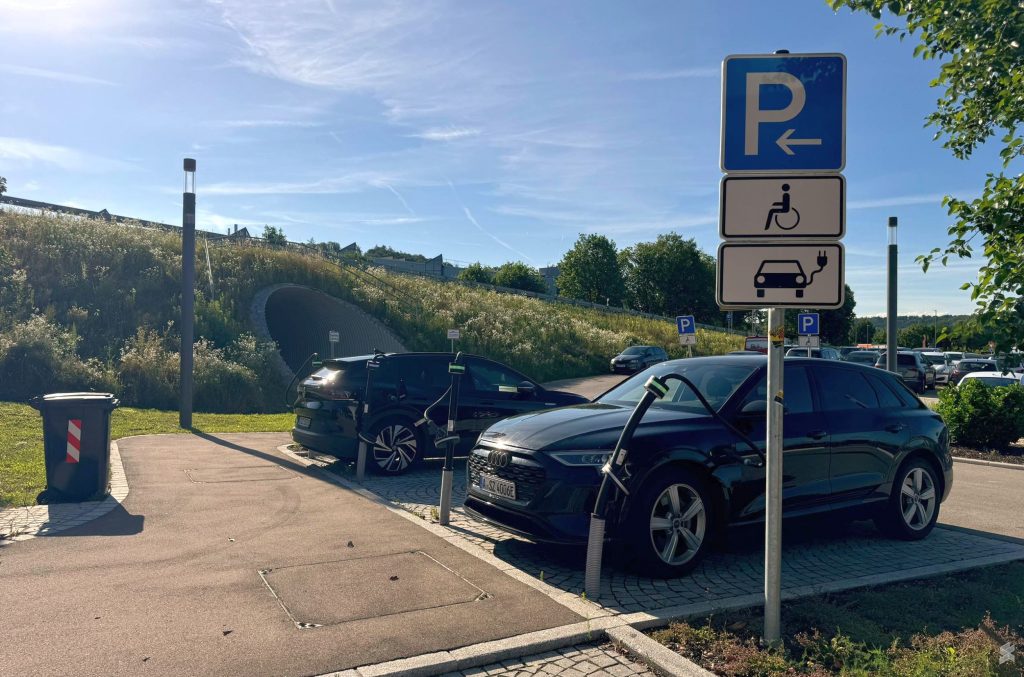
Sortimo has deployed a total of 60 DC Charging points which consists of 24 Ultra-fast DC Charge points that can push 300kW and beyond, while the remaining 36 free-standing units are rated for 35kW. The Ultra-fast DC chargers are covered and they are deployed under a “mushroom” like designed column which has 4 ceiling-mounted CCS2 cables each.

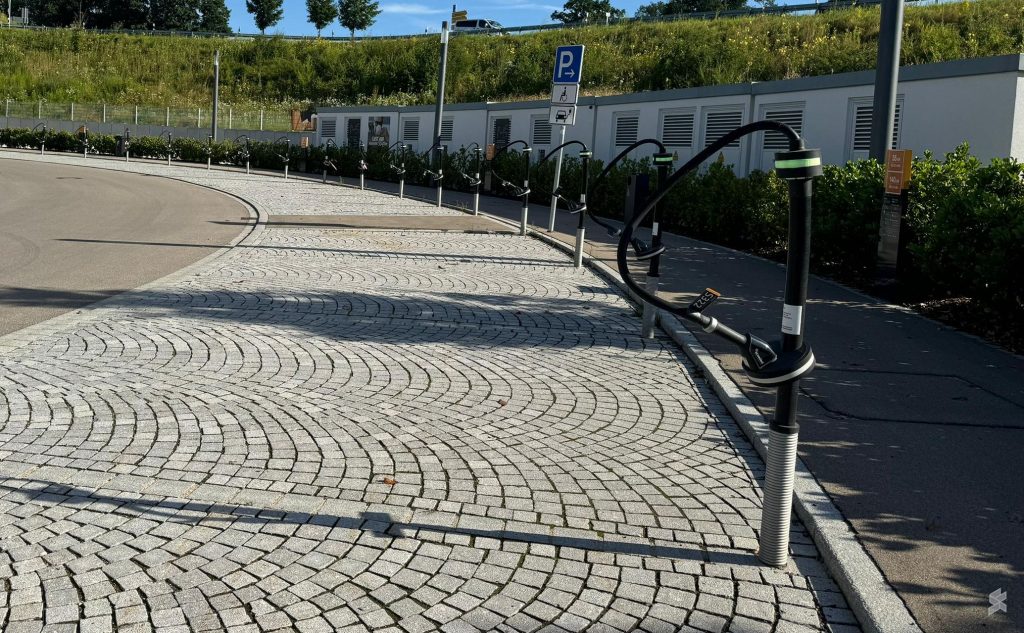
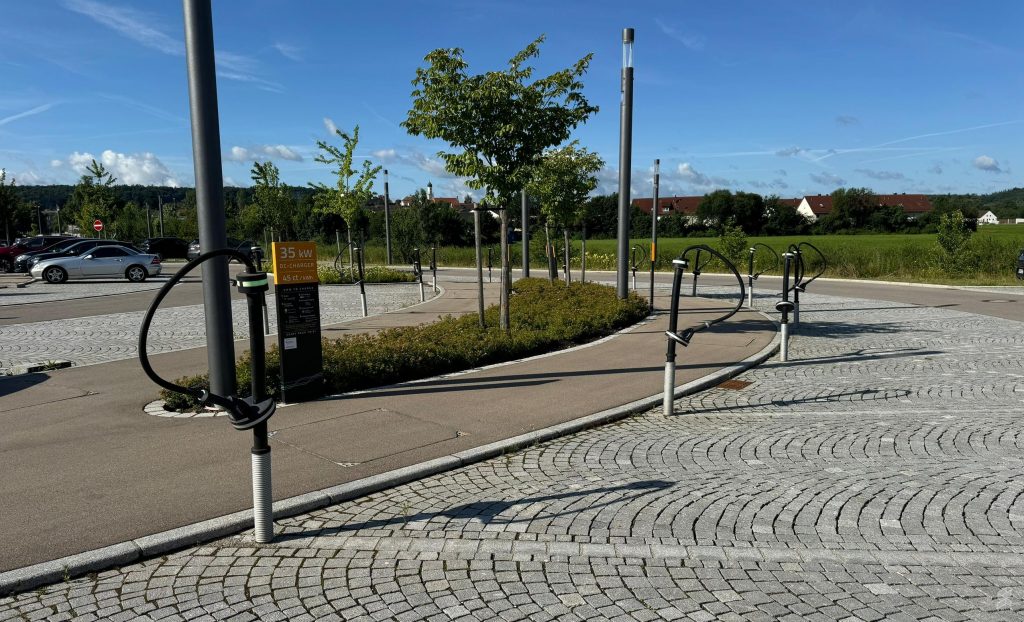
If you’re not in a hurry and plan to make a longer stop of at least an hour, the slower 35kW DC chargers are the ideal option. Not only it is cheaper, but you can take your time to rest and have a meal without the need to rush out to move your vehicle when it is fully charged ahead of schedule.
If you have an EV with a 70kWh battery, an hour should be enough to get you from 30-80%. Since these DC chargers are pushing a lower power output, you won’t need to worry much about the charging curve if you plan to charge your EV to 100%. After all, the charging rate is based on kWh consumed, rather than time.
It is also worth noting that these freestanding DC charge points are quite flexible as it has a spring base which allows you to stretch the cable if required.

Unlike the slower DC charge points which are deployed in an outdoor car park arrangement, the 24x 300kW DC charge points are installed in a petrol station-style forecourt layout. In front of the building’s covered entrance, there are a total of 6 columns with 4 charging bays each. The cables with CCS2 nozzles are suspended from the roof allowing the flexibility to support various vehicles including electric buses.
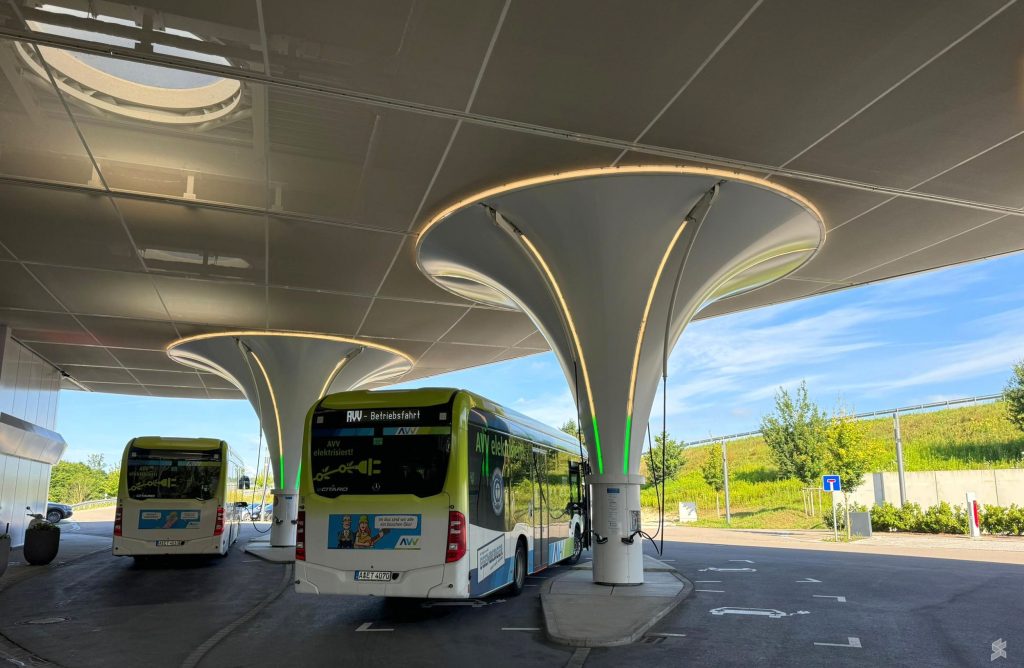
As you can see above, two electric buses are being juiced up and they occupy two lots each. Despite the peak summer holiday season, the location seems to be very underutilised and it has loads of capacity to support more EV users along the Autobahn.
Sortimo EV Charging Station activation and pricing
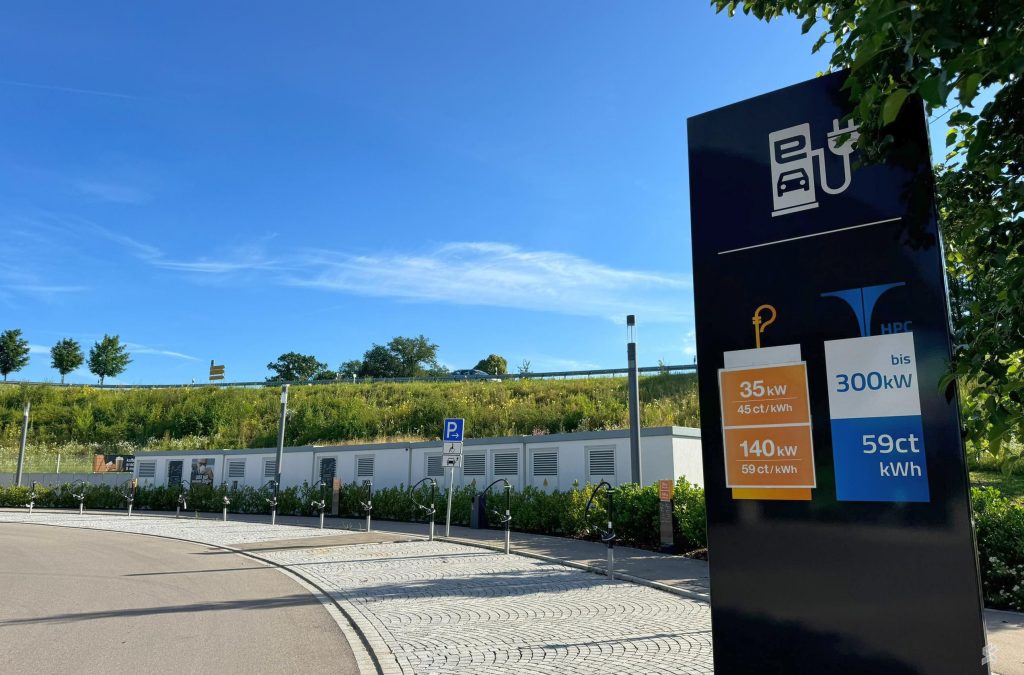
The Sortimo EV Chargers can be activated via the eLoaded app which is available on both Apple App Store and Google Play Store. If your EV comes with its own EV charging card or app (e.g. BMW Charging, Mercedes me Charge, Charge myHyundai, ChargeNow), you can activate them as well thanks to Sortimo’s roaming arrangement with several charging service partners.
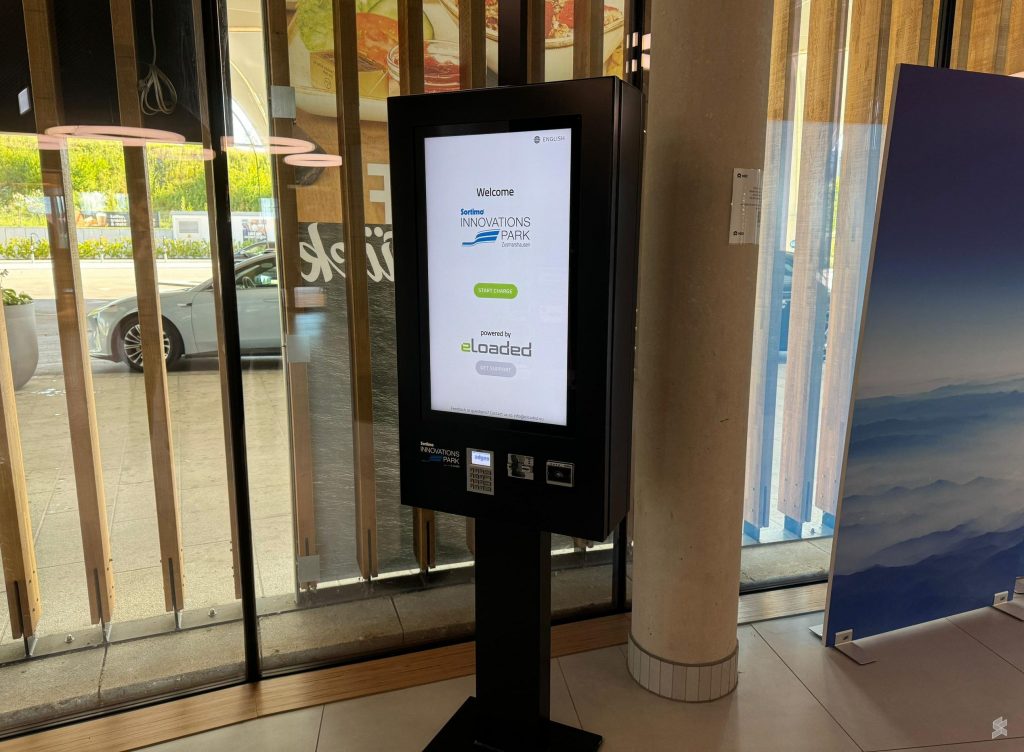
If you don’t have an app, don’t worry. You can also activate and pay via your credit or debit cards (Mastercard/Visa) from a central kiosk. Just make sure you take note of the charger number from the label attached to the nozzle before making a payment. Take note that the building is only open from 6am to 10pm daily, and you’ll need to use the app if you plan to charge outside the opening hours.
What’s interesting is that the DC charging process will start automatically once you plug the cable into your vehicle. This is to ensure that the charger is connected and working fine before you make the payment to unlock the full speed.
The outdoor freestanding DC charge points are priced at EUR 0.45 per kWh for 35kW, and it can go up to 140kW if you opt for the higher EUR 0.59 per kWh rate. Meanwhile, the covered DC charge points at the forecourt capable of doing 300kW are priced at EUR 0.59 per kWh.
When we played around with the kiosk, we noticed that the chargers are capable of pushing up to 475kW. From the looks of it, these chargers are able to deliver a higher output if there’s sufficient power capacity.
V3 Tesla Supercharger
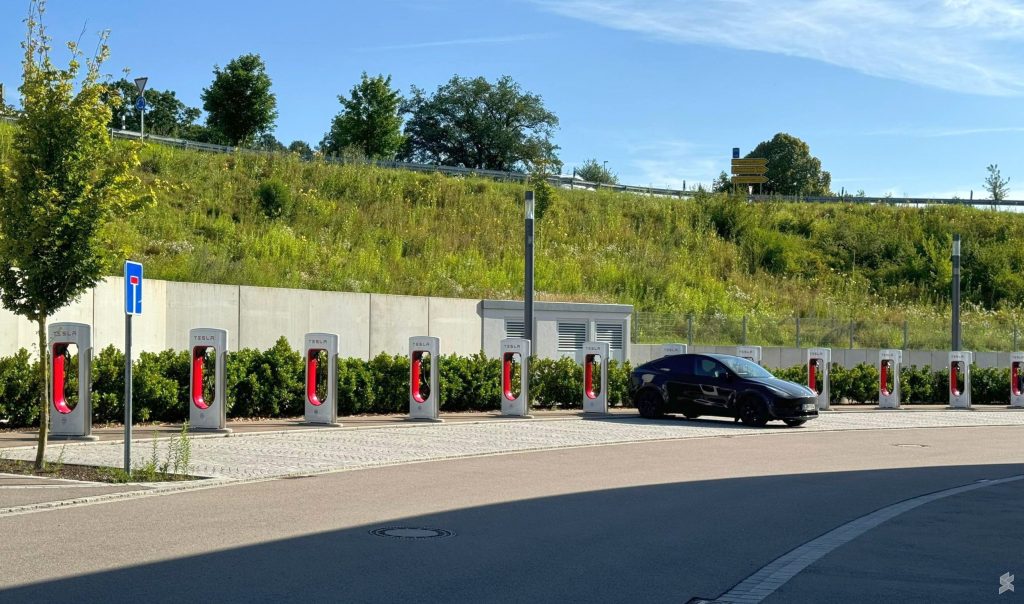
In addition to the 70 DC charge points, the location is also home to a V3 Tesla Supercharger with 12 stalls. These units are capable of pushing DC charging up to 250kW, which should give a Tesla Model Y up to 270km of range in 15 minutes. If you have a Tesla, you don’t need to fiddle with an app, as it offers a seamless Plug and Charge experience.
In Germany, the Tesla Supercharger is priced at EUR 0.50 per kWh. Tesla also imposes an idle fee of up to EUR 1.00 per minute when the station is 100% occupied.
Nio Power Swap Station
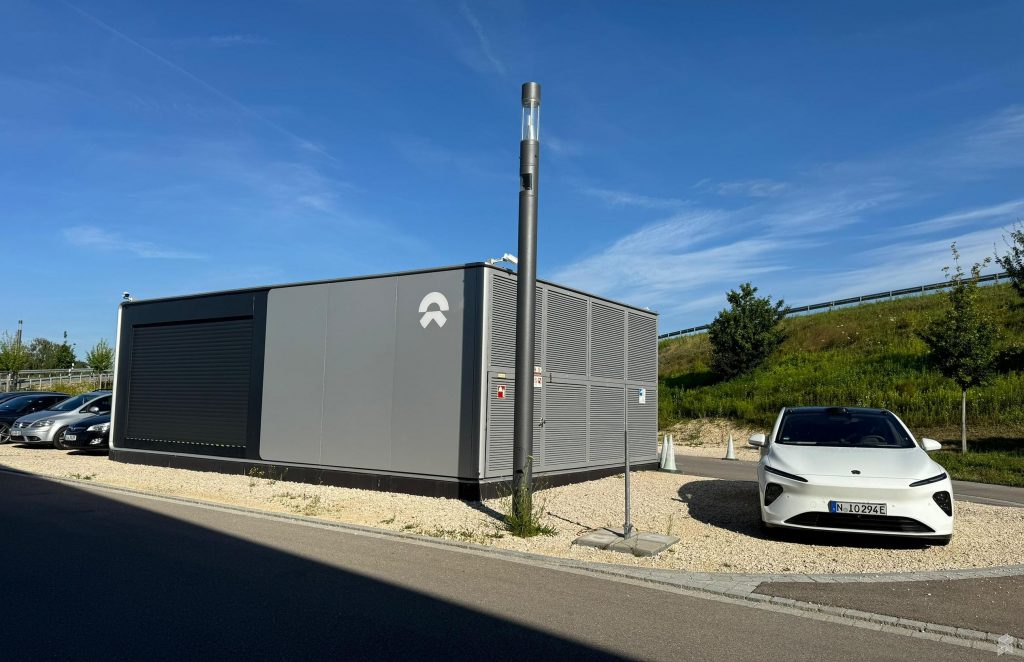
Another interesting addition to the park is Nio’s Power Swap Station. This is essentially an EV battery-swapping station which can swap a Nio EV’s battery for a fully charged unit in about 3 minutes.
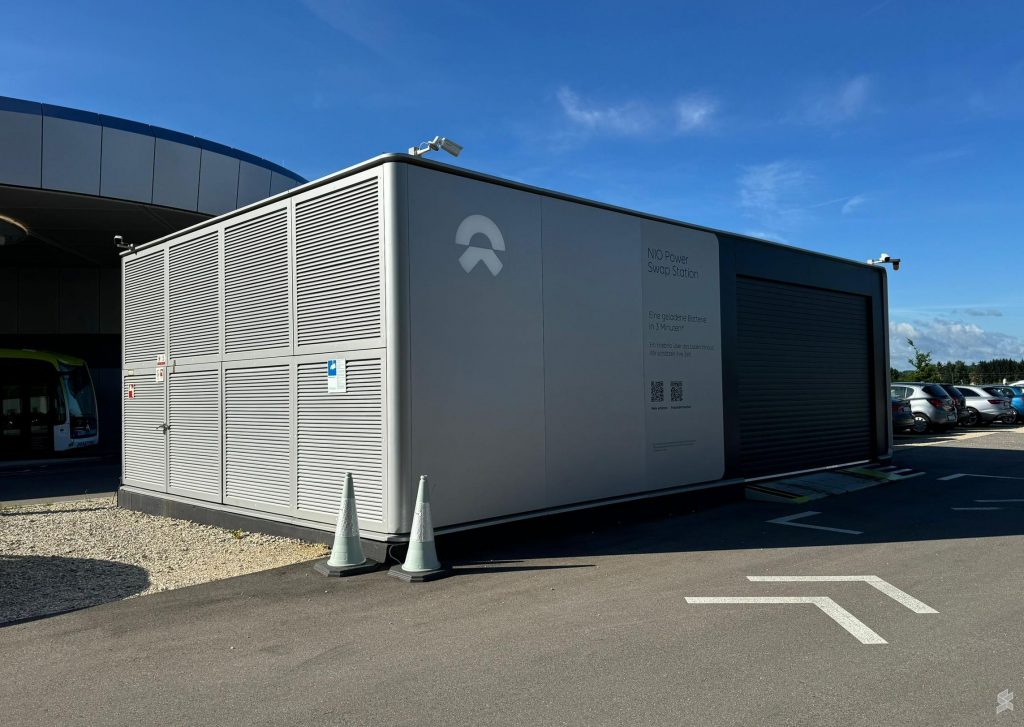
During our visit, we didn’t get to see the power swap station in action, but we saw a couple of Nio ET7 in the area including a local taxi. The battery swap process is fully automated and Nio drivers can park the car and start the battery-swapping process at the touch of a button.
Mega DC Charging Hubs can alleviate range anxiety concerns
The EV charging hub at Sortimo Innovations Park is a prime example of how EV charging infrastructure is implemented along interstate highways to cater for mass adoption. The current typical setup of having 2-4 DC charge points per R&R will no longer be sufficient if there are more EVs especially sub-RM100K models from Proton and Perodua. Some of the biggest charging hubs planned or deployed along the highway are DC Handal’s 400kW DC charging hubs with 4x charge points on WCE and ChargEV’s Hyperpower EV charging hub at Seremban Soundbound R&R with 8 bays.
Given the time it takes for a quick charge an EV for long-distance drives, the number of DC charge points at an R&R should be at least triple the number of pumps in a typical highway petrol station, if we want to replace all combustion-powered vehicles with EVs.
Of course, setting up an EV charging hub at this scale will require significant investments. Besides offering various incentives for buyers, Malaysia should also look into incentivising the development of EV charging infrastructure as the charging network is also a crucial factor for people thinking of switching to EVs.

